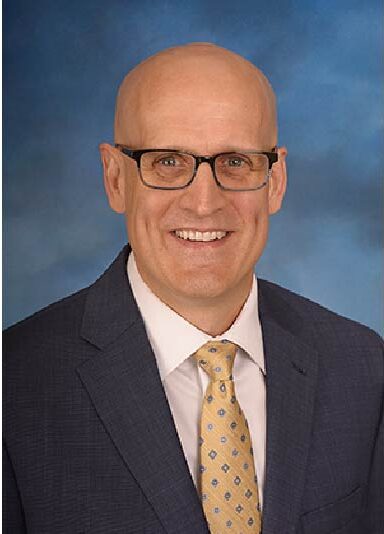
At the intersection of insurance and technology, you’ll usually find an actuary.
The crossroads of auto insurance these days is telematics, the use of an electronic device to monitor how an automobile is being driven. The device monitors where a car is and how it is being driven, and in theory, should help separate good drivers from bad drivers.
At the CAS Ratemaking and Product Management Seminar, held March 30-April 1, actuaries learned how telematics works and how well it works in the insurance industry. And, they were told, actuaries are critical to making telematics successful in the future.
Jim Weiss, FCAS, spoke about how ISO, a Verisk Analytics company, developed its telematics product, which rolled out in 2013. Jerel Cestkowski of American Family Insurance described some of the nuts-and-bolts issues involved in developing the infrastructure of customer service and claims that lie behind the product.
Allen Greenberg, a senior policy analyst at the U.S. Department of Transportation, described the government’s interest and stake in telematics.
It turns out that learning intimate driving behaviors doesn’t automatically translate into more accurate rates for consumers or higher profits for insurers, said Weiss, the ISO actuary.
Here’s how insurers use telematics these days: If a customer is interested, the insurer gives him a device called a “dongle,” which is hooked into the car’s computer systems. Typically the dongle monitors when and where a car is driven along with the length of the trip and the amount of fuel used. Sometimes it monitors the speed of the car, use of seatbelts, engine temperature and “acceleration events”—speeding up and braking.
If a driver is aware of these things, he or she will become a better driver. Weiss pointed to studies indicating that crash rates fell between 20 percent and one-third in cars monitored via telematics.
But monitoring an automobile is not cheap, he noted. The dongle typically costs about $100 and lasts three years. It communicates with the insurer via wireless, which costs about $5 a month.
To be viable, the savings from better driving must offset those costs. Weiss estimated that loss ratios would have to drop 22 percent to justify a permanently installed dongle.
One alternative: Move the dongle to a new vehicle every six months. That’s enough time for long-term driver behavior to improve but at a much lower cost per vehicle. Loss ratios would still have to fall 13 percent to break even, Weiss estimated—difficult, but possible.
For an insurer, actuaries would need to show that all the work is worth it. Over the decades, actuaries have developed a powerful set of rating factors. And in recent years actuaries have, through predictive modeling, refined their craft even further.
Those old factors do a good job—almost as good as telematics, as Weiss showed by example. In a traditional rating plan, younger drivers are a higher risk. The risk ebbs as the driver ages, then increases a bit as the driver heads past middle age. By comparison, telematics track, for example, the propensity to slam on the brakes, which can be a sign of an incautious driver. ISO found that young drivers tend to slam on the brakes a lot. The tendency ebbs as they get older, then increases a bit around age 60.
In other words, the telematics research affirmed the old rating factor.
There were surprises, Weiss said. Older vehicles typically were assessed lower rates, but telematics showed that risky maneuvers increased with older vehicles.
At ISO, the actuary’s job became to tease out the added precision the telematics product gave. The result: Telematics gave ISO’s rating plan “lift,” meaning that the better a driver’s telematic score, the lower that driver’s expected claim cost.
Learning intimate driving behaviors doesn’t automatically translate into more accurate rates for consumers or higher profits for insurers.
Monitoring the driver and developing the rate are important, of course, but Cestkowski of American Family pointed out that telematics creates other expenses and challenges.
Take customer service. The device opens up a new set of questions that a company’s representatives must know how to handle, questions like:
- How do you install the dongle? (The answer differs, he said, depending on the model. And company reps will have to know them all.)
- Do you share data with police? (No.)
- What data does the device monitor?
- When will I get my discount?
A company must either train its current support staff or create a new level of specialist to handle telematics questions.
“You’re going to have to invest in education and resources to handle this in your support areas,” Cestkowski said.
Agents will need training, too. At companies like American Family, the agent is often the first person a customer calls. The agent will have to understand the product and its nuances.

The introduction of telematics will have an impact on marketing issues, such as whether the product should be used to target new customers or to try to retain existing customers. And there are privacy considerations, which constitute one of the main reasons consumers hesitate before trying a telematics product.
Even with the logistical challenges, usage-based or telematics-enabled pricing remain an insurance concept that the federal government tends to favor, said U.S. Department of Transportation Analyst Greenberg.
Operating an automobile is deceptively expensive, he said, because most costs—the car itself, parking, vehicle taxes and fees—are fixed. There is little incentive to avoid using a vehicle, he said. Even high gas prices don’t make that much of a difference.
Telematics convert one of those fixed costs, insurance, into a variable cost. If people understand the cost-per-mile to operate a car, they drive less. That leads to a host of social benefits: fewer crashes, less congestion, less pollution and less urban sprawl.
James P. Lynch, FCAS, is chief actuary and director of research and information services for the III in New York City.











